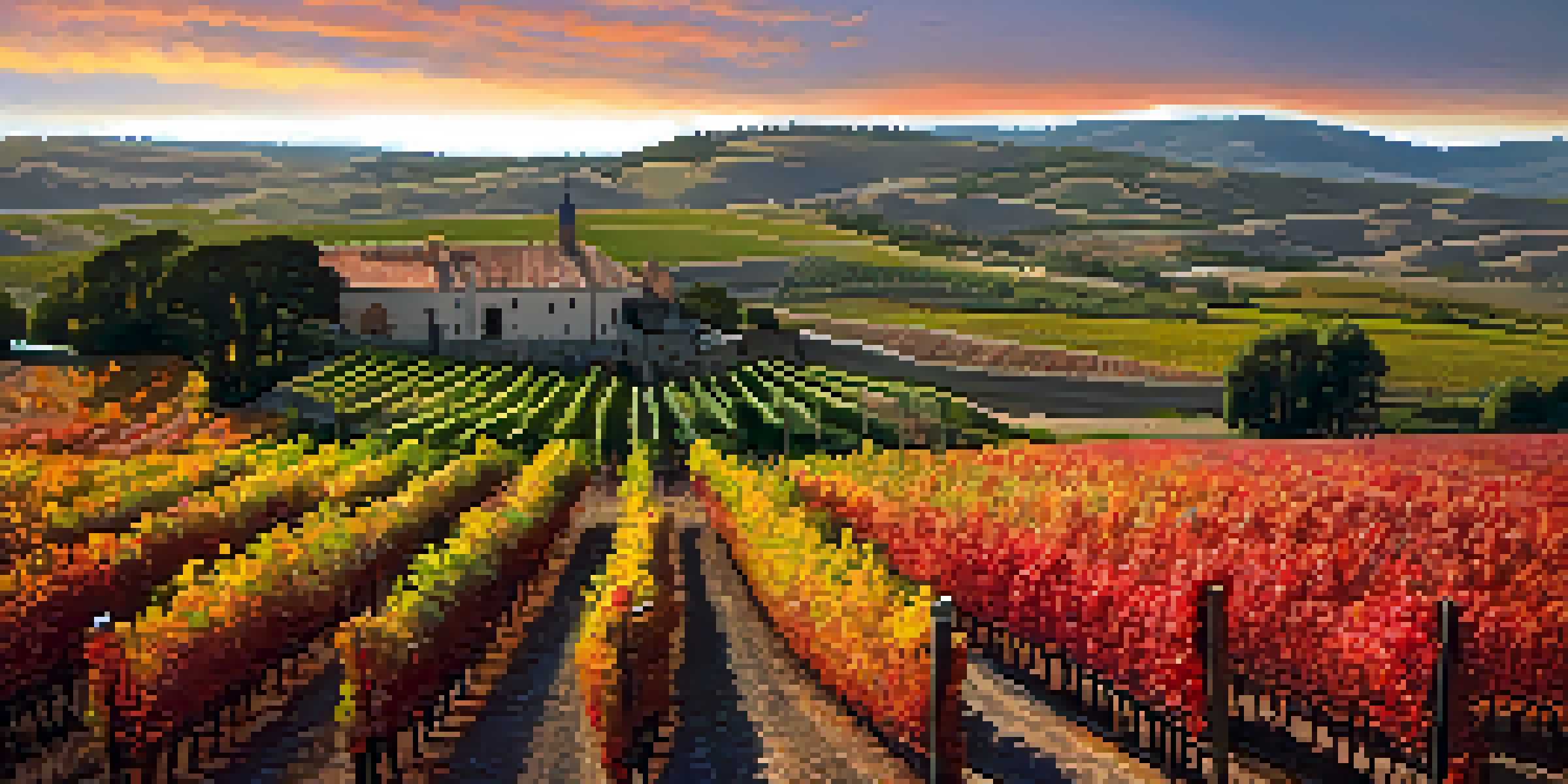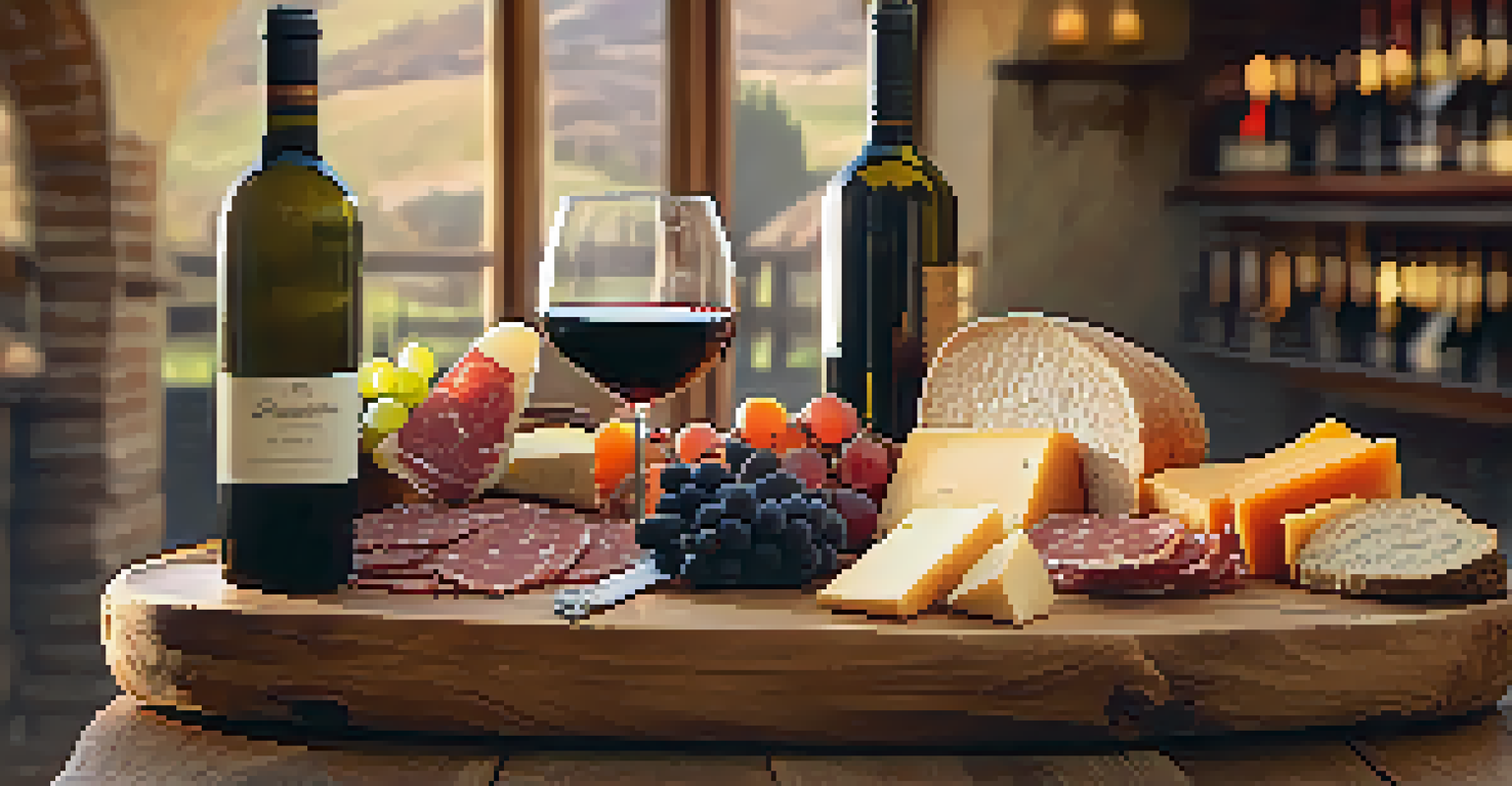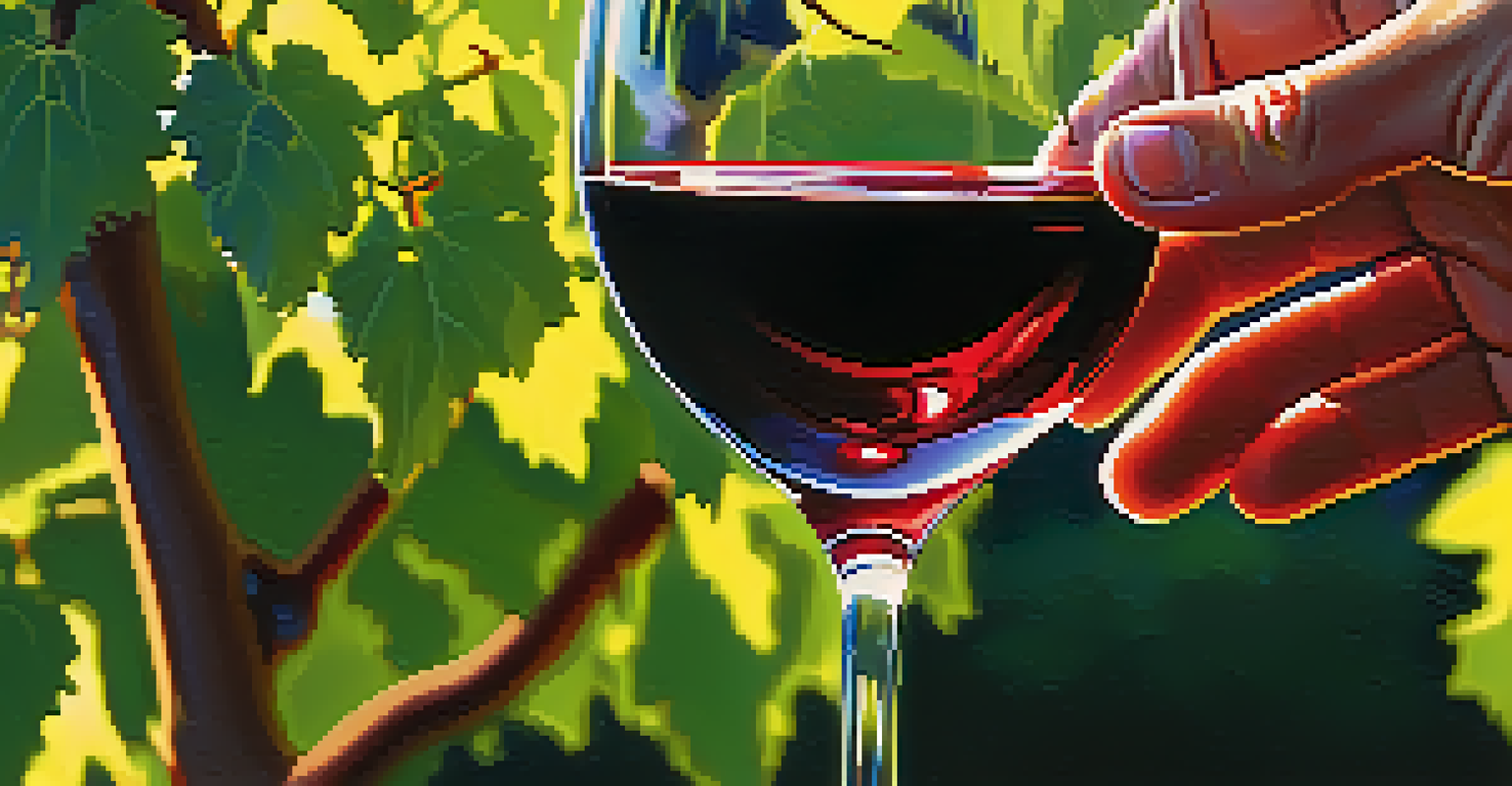Ribera del Duero: A Deep Dive into Spain's Wine Heritage

The Historical Roots of Ribera del Duero Wine
Ribera del Duero boasts a fascinating history that dates back to ancient times. Wine production in this region can be traced to the Roman Empire, showcasing its longstanding connection to viticulture. Over the centuries, various influences shaped the winemaking practices here, culminating in the unique styles we enjoy today.
Wine is sunlight, held together by water.
The region gained official recognition in the 1980s, which marked a turning point for local winemakers. This newfound status helped elevate the wines of Ribera del Duero on the global stage, drawing attention from both critics and enthusiasts. Today, it's celebrated for its robust and complex reds, particularly those made from the Tempranillo grape.
As you sip a glass of Ribera del Duero, you're not just tasting wine; you're experiencing a piece of history that reflects the culture and dedication of its people. Each bottle tells a story, carrying with it centuries of tradition and craftsmanship that continue to thrive today.
Understanding the Unique Terroir of Ribera del Duero
Terroir, a French term that encompasses the environment in which grapes are grown, plays a crucial role in the quality of Ribera del Duero wines. The region's high altitude, diverse soils, and climate contribute to the distinct flavors found in its wines. With vineyards nestled along the Duero River, the terroir provides the perfect conditions for grape cultivation.

The combination of hot summers and cold winters creates a unique microclimate that enhances the ripening process of grapes. This temperature variation allows for a longer growing season, resulting in grapes that are rich in flavor and complexity. The region's varied soil types, from clay to limestone, further influence the character of the wines produced here.
Rich History of Ribera del Duero
Ribera del Duero's winemaking tradition dates back to the Roman Empire, showcasing a deep cultural connection to viticulture.
By understanding the terroir, wine lovers can appreciate why Ribera del Duero wines have a signature profile. Each sip reflects the land and climate, allowing drinkers to connect with the region's natural elements, making it a truly immersive experience.
The Signature Grape Varieties of Ribera del Duero
While Ribera del Duero is primarily known for its Tempranillo grape, other varieties also play a significant role in its winemaking. Tempranillo, often referred to as Tinta del País or Tinto Fino in this region, is celebrated for producing rich, full-bodied reds with dark fruit flavors. This grape thrives in the local climate, making it the star of many Ribera del Duero wines.
In wine, there is truth.
In addition to Tempranillo, winemakers here often blend in small amounts of other grapes like Cabernet Sauvignon, Merlot, and Malbec. These blending varieties add depth and complexity, allowing winemakers to craft unique profiles that cater to diverse palates. Each grape contributes its own characteristics, enhancing the final product.
The balance of these grape varieties not only showcases the region’s diversity but also reflects the creativity of the winemakers. By experimenting with blends, they create wines that tell a story of their own, inviting enthusiasts to explore the depth of Ribera del Duero’s offerings.
The Winemaking Process in Ribera del Duero
Winemaking in Ribera del Duero is both an art and a science, with traditions passed down through generations. The process begins with careful grape selection, ensuring only the best fruit is used for fermentation. Once harvested, the grapes undergo destemming and crushing, a crucial step that prepares them for fermentation.
Fermentation typically occurs in stainless steel or wooden tanks, where yeast converts the grape sugars into alcohol. Winemakers pay close attention to temperature control during this stage, as it greatly influences the wine's flavor profile. After fermentation, the wine is aged in oak barrels, which adds complexity and depth to the final product.
Unique Terroir Influences Flavor
The region's high altitude, diverse soils, and climate create distinct flavors in Ribera del Duero wines.
The dedication and expertise of Ribera del Duero winemakers are evident throughout the entire process. From vineyard management to the final blending, each step is executed with precision, resulting in wines that embody the region’s rich heritage and innovative spirit.
Pairing Ribera del Duero Wines with Food
Ribera del Duero wines are incredibly versatile when it comes to food pairings, elevating any dining experience. The bold flavors of Tempranillo make it an excellent companion for hearty dishes, such as grilled meats, stews, and aged cheeses. Its rich tannins and acidity complement the savory notes, creating a harmonious balance.
For those who enjoy experimenting, Ribera del Duero wines can also enhance lighter fare. Think roasted vegetables or grilled fish drizzled with olive oil. The wine's fruit-forward character can brighten these dishes, lending them an unexpected depth of flavor.
When in doubt about pairing, consider the region's cuisine. Traditional Spanish dishes, like paella or tapas, provide a delightful match for Ribera del Duero wines, showcasing the vibrant culinary culture that complements the wine’s heritage.
Notable Vineyards and Wineries in Ribera del Duero
Ribera del Duero is home to numerous renowned vineyards and wineries, each with its own unique story. Some of the most notable include Vega Sicilia, one of Spain's oldest and most prestigious wineries, known for its exceptional wines that often fetch high prices at auction. Their commitment to quality has solidified their reputation both locally and internationally.
Another standout is Bodegas Emilio Moro, which has gained recognition for its innovative approach to winemaking while respecting traditional methods. Their wines reflect a deep connection to the land, showcasing the terroir of Ribera del Duero in every bottle. Each vintage tells a story of the vineyard's unique environment.
Versatile Food Pairings
Ribera del Duero wines, particularly Tempranillo, complement a wide variety of dishes, enhancing the dining experience.
Visiting these wineries offers a chance to immerse yourself in the local culture and craftsmanship. Many provide tours and tastings, allowing wine lovers to connect with the people behind the bottles, making it an unforgettable experience.
The Future of Ribera del Duero Wines
As the world of wine continues to evolve, Ribera del Duero is poised for exciting developments. New generations of winemakers are emerging, bringing fresh perspectives and innovative techniques to the traditional practices of the region. This blend of old and new is vital for keeping Ribera del Duero wines relevant in a competitive global market.
Sustainability is becoming increasingly important, with many wineries adopting eco-friendly practices. From organic farming to responsible water use, these efforts not only benefit the environment but also enhance the quality of the wines. The focus on sustainability resonates with today’s conscious consumers, making Ribera del Duero wines even more appealing.

Looking ahead, Ribera del Duero is set to maintain its reputation as a powerhouse in the wine world. With its rich heritage, commitment to quality, and innovative spirit, this region promises to continue captivating wine enthusiasts for generations to come.